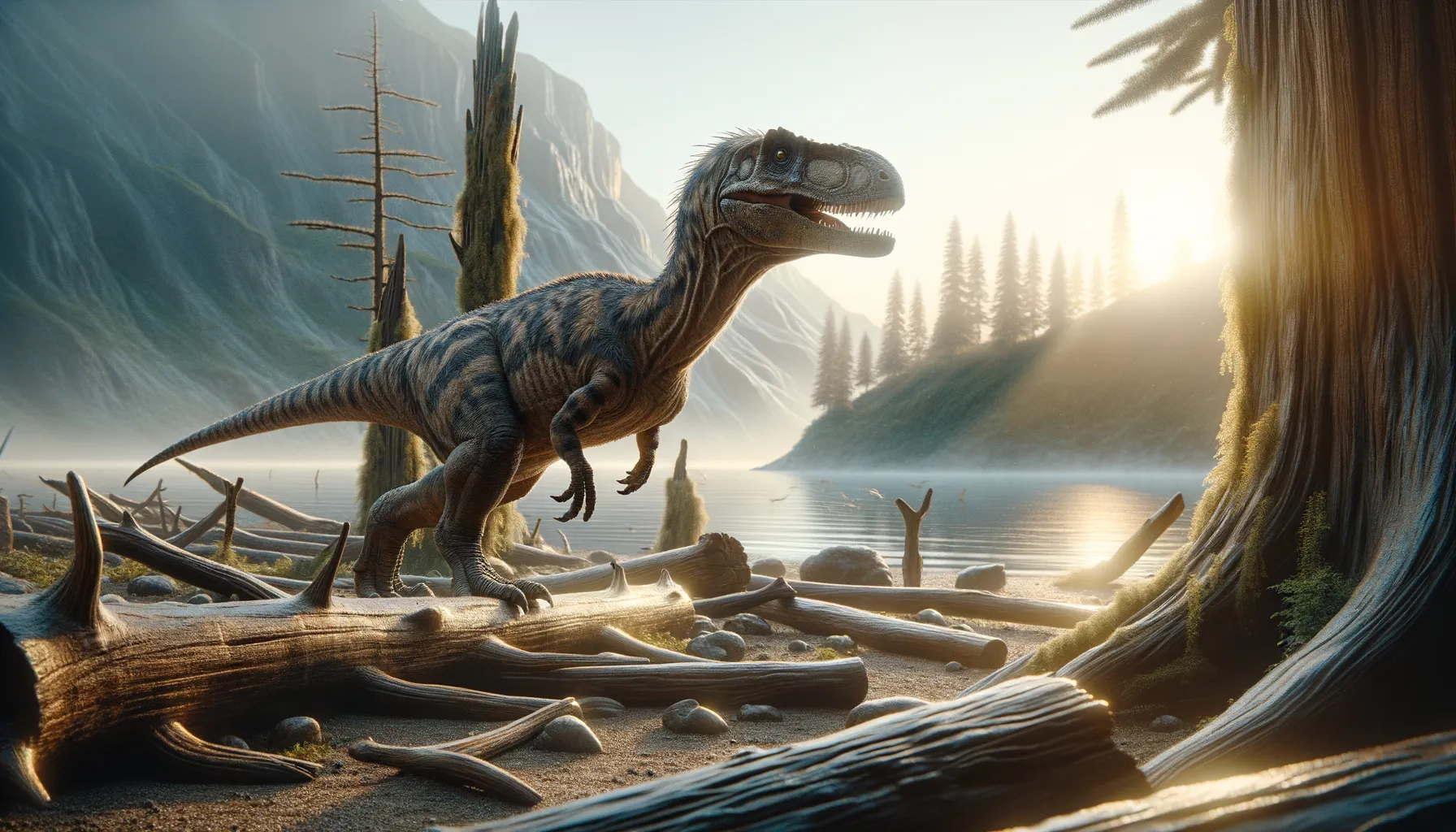
Yaverlandia
Unearthing clues from the Isle of Wight.
Period
Cretaceous
Length
Roughly 3 meters long.
Height
Approximately 1 meter tall.
Weight
Its weight was around 20 kilograms.
Yaverlandia was a small theropod dinosaur that lived during the early Cretaceous period. It is known primarily from fossil remains discovered on the Isle of Wight in England. While not much is known about this dinosaur, it is generally recognized as a member of the group Maniraptora, sharing evolutionary traits with some of the smaller, bird-like theropods. Yaverlandia adds to our understanding of the diversity and evolution of theropods.
Diet
Yaverlandia is believed to have been a carnivore. Its diet likely consisted of small vertebrates, possibly including small reptiles and mammals. Its sharp teeth would have aided in catching and consuming prey.
Hunting
While detailed hunting behavior is speculative, Yaverlandia was likely a pursuit predator. It could have used its agility and quick bursts of speed to catch smaller, faster prey. Its sharp teeth would have been effective for gripping and tearing meat.
Environmental challenges
During the early Cretaceous period, Yaverlandia faced changing landscapes and climates. The environment was likely semi-arid, with seasonal variations that could pose challenges. Food availability would fluctuate, necessitating adaptability in hunting and foraging strategies. The presence of larger predators would also be a constant threat, requiring vigilance and possibly defensive strategies.
Speed
Moderate, likely not a fast runner.
Lifespan
Lifespan details are not well-known.
First discovery
Discovered in the 1970s on the Isle of Wight, UK.
Fun Facts
- Yaverlandia is a small dinosaur from the early Cretaceous period, around 125 million years ago.
- It was discovered on the Isle of Wight, England, one of the richest dinosaur fossil sites in Europe.
- Yaverlandia is believed to be one of the earliest known members of the theropod group, which also includes T. rex and modern birds.
- Unlike many of its larger theropod cousins, Yaverlandia was quite small, likely comparable in size to a chicken.
- Its name Yaverlandia refers to the Yaverland Point, the location where its fossils were first found.
- Yaverlandia is intriguing in its contribution to the understanding of the evolution from dinosaurs to birds.
- Only a partial skull and some fragments are known, making it a bit of a paleontological puzzle.
Growth and Development
Like other theropods, Yaverlandia would have hatched from eggs. The young would need to grow rapidly to survive, increasing in size and strength. During growth, they would rely heavily on adult guidance for protection and learning hunting skills. Growth rates might have varied depending on environmental conditions and food availability.
Habitat
Yaverlandia inhabited regions that are today part of the Isle of Wight, which was then a diverse ecosystem with forests and open plains. Its environment would have been a mix of land and water sources, supporting varied vegetation. Such habitats would have provided ample opportunities for hunting prey and shelter from predators.
Interaction with other species
Interacting with other species, Yaverlandia likely competed for food with other carnivorous dinosaurs. It may have coexisted with herbivores and used stealth to hunt without alarming other potential prey. Social interactions amongst its kind could have ranged from solitary hunting to occasional group interactions when hunting larger prey.
Natural lifespan
The natural lifespan of Yaverlandia is not specifically documented.
Reproduction
Yaverlandia, like other theropods, reproduced by laying eggs. Nesting sites were likely selected for safety from predators and environmental elements. Parental care may have existed, with either or both parents protecting and possibly tending to eggs. Nest locations could be communal or solitary depending on social structures.
Social behaviour
While specific details are scant, Yaverlandia might have exhibited solitary or semi-social behavior. Interactions could involve limited cooperation during hunting or nesting periods. Social dynamics would be influenced by environmental factors and resource availability, potentially fostering temporary alliances.
Fossil locations
Specimens of Yaverlandia have been found primarily on the Isle of Wight. The first fossils were discovered in rock formations known for preserving early Cretaceous fauna. These fossil finds provide insights into the area's paleoecology and the species that once thrived there. Further discoveries could expand knowledge of its distribution.
